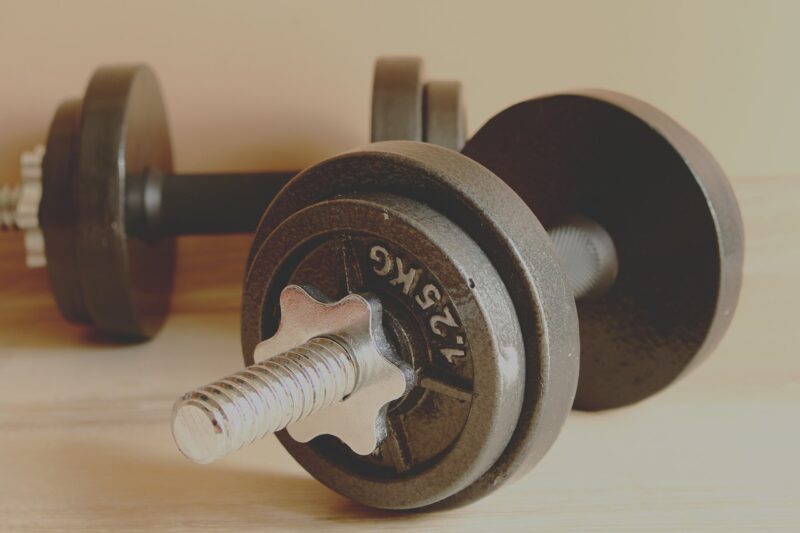How to Measure Your Progress for Muscle Gain: The Best Metrics to Track
November 14, 2024

Gaining muscle is an invigorating journey that encompasses not just the actual workouts but also the methods we use to measure our progress. While the scale can be a useful tool, it often tells only part of the story. To truly understand how your muscles are developing and whether your training regimen is effective, it’s essential to track more metrics than just your body weight. In this article, we’ll dive deep into the best metrics to track your muscle gain, ensuring you have a comprehensive view of your progress.
1. Body Composition Measurements
Body composition is a significant indicator of muscle gain. Rather than focusing solely on weight, understanding the proportion of muscle, fat, and other tissues can provide clearer insights into your progress.
– Body Fat Percentage: Utilizing calipers, bioelectrical impedance scales, or DEXA scans can help you keep track of your body fat percentage. Ideally, as you build muscle, you’ll want to see a decrease in body fat percentage while muscle mass increases.
– Lean Mass Measurements: By measuring your lean body mass through methods such as hydrostatic weighing or MRI scans, you can get a more accurate picture of muscle gain. Tracking increases in lean mass is a clear sign of progress in your strength training.
2. Progress Photos
One of the most effective and motivational ways to track muscle gain is through progress photos. These should be taken under consistent lighting and similar poses to provide the best comparison.
– Frequency: Take photos every 4 to 6 weeks to capture changes over time. This visual progression can encourage you and allow you to notice subtle changes that might not be evident through numbers alone.
– Angles: Capture photos from the front, sides, and back for a comprehensive view of your physique changes.
3. Strength Gains
The ability to lift heavier weights over time is a direct indicator of muscle growth. Tracking your strength gains can help you determine the effectiveness of your training regimen.
– One-Rep Max (1RM): Testing your one-rep max on key exercises such as squats, deadlifts, and bench press can provide insight into your strength improvements. Even tracking increases in your five-rep or ten-rep max can serve as valuable data points.
– Rep Progressions: Note the number of repetitions or sets you are able to perform over time. If you can lift the same weight for more repetitions than before, that indicates muscle growth and increased endurance.
4. Measurements and Circumferences
Tracking the circumferences of key muscle groups can give you tangible evidence of muscle growth.
– Key Areas to Measure: Consider measuring your arms, chest, waist, hips, thighs, and calves. Taking measurements every 2-4 weeks can help you notice gains over time that the scale might not reveal.
– How to Measure: Use a soft measuring tape, and ensure it’s snug but not too tight. Record your measurements consistently for accurate tracking.
5. Recovery Metrics
The way your body recovers after workouts can also indicate how well you are building muscle. Effective tracking can include:
– Resting Heart Rate: A decreasing resting heart rate can signal improved cardiovascular fitness and muscle recovery ability. Using a fitness tracker or a simple morning check can yield valuable data.
– Soreness Levels: Keep a log of delayed onset muscle soreness (DOMS) post-workout. While some soreness is normal, consistently high levels might indicate you are overworking or not recovering properly.
6. Performance in Daily Activities
Sometimes our strength is best measured outside the gym. Consider how your muscle gains impact your performance during everyday tasks.
– Everyday Strength: Are you finding daily tasks easier? Whether it’s carrying groceries, climbing stairs, or playing with kids, improvements in these areas can reflect muscle gain.
– Adaptation in Activities: Instances of being able to participate in physical activities, like sports or outdoor adventures, with greater ease can be a sign of positive changes in your muscular fitness.
7. Subjective Assessments
Lastly, your personal feelings about your strength and muscle improvements matter immensely. Utilize personal reflections, journaling, or questionnaires to evaluate your perceptions.
– Self-Assessment: How do your clothes fit? Are you feeling more confident in your body? Gather these personal impressions over time to gauge how you feel overall about your muscle gain.
– Feedback from Others: Sometimes, external observations from friends, family, or workout partners can help notice changes in your physique and strength that you may overlook.
Conclusion
Tracking your muscle gain effectively involves leveraging a range of metrics, from body composition and strength gains to everyday performance and personal assessments. By using a multi-faceted approach to measure your progress, you can not only chart your journey towards your muscle gain goals but also stay motivated and informed about your training effectiveness. Remember, the ultimate goal is to find a method that resonates with you and keeps you moving forward.
Stay consistent, and don’t hesitate to adjust your strategies as needed, ensuring that your path toward your fitness goals remains productive and enjoyable.








